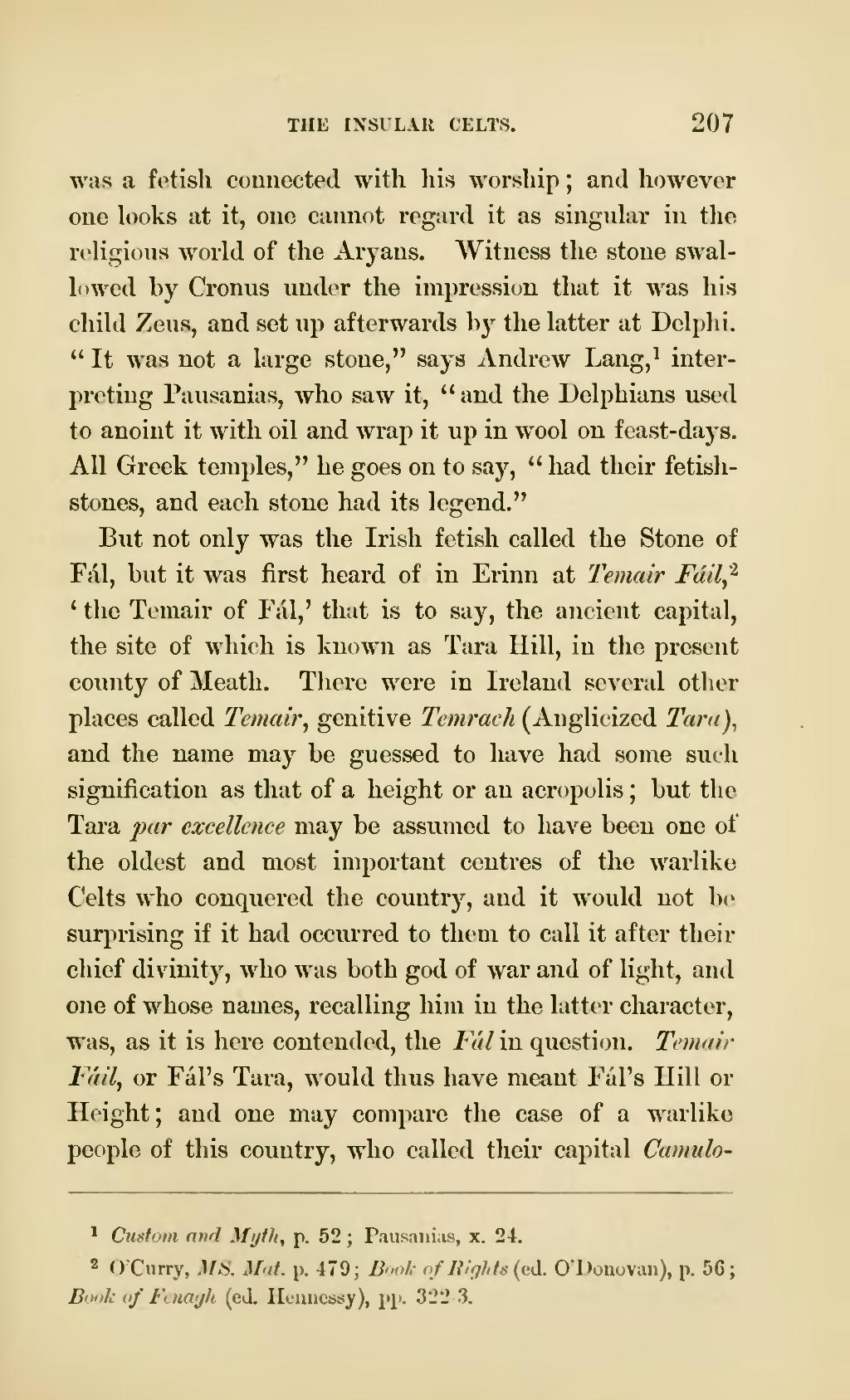was a fetish connected with his worship; and however one looks at it, one cannot regard it as singular in the religious world of the Aryans. Witness the stone swallowed by Cronus under the impression that it was his child Zeus, and set up afterwards by the latter at Delphi. "It was not a large stone," says Andrew Lang,[1] interpreting Pausanias, who saw it, "and the Delphians used to anoint it with oil and wrap it up in wool on feast-days. All Greek temples," he goes on to say, " had their fetish-stones, and each stone had its legend."
But not only was the Irish fetish called the Stone of Fál, but it was first heard of in Erinn at Temair Fáil,[2] 'the Temair of Fál,' that is to say, the ancient capital, the site of which is known as Tara Hill, in the present county of Meath. There were in Ireland several other places called Temair, genitive Temrach (Anglicized Tara), and the name may be guessed to have had some such signification as that of a height or an acropolis; but the Tara par excellence may be assumed to have been one of the oldest and most important centres of the warlike Celts who conquered the country, and it would not be surprising if it had occurred to them to call it after their chief divinity, who was both god of war and of light, and one of whose names, recalling him in the latter character, was, as it is here contended, the Fál in question. Temair Fáil, or Fál's Tara, would thus have meant Fál's Hill or Height; and one may compare the case of a warlike people of this country, who called their capital Camulo-
- ↑ Custom and Myth, p. 52; Pausanias, x. 24.
- ↑ O'Curry. MS. Mat. p. 479; Book of Rights (ed. O'Donovan), p. 56; Book of Fenagh (ed. Hennessy), pp. 322-3.
